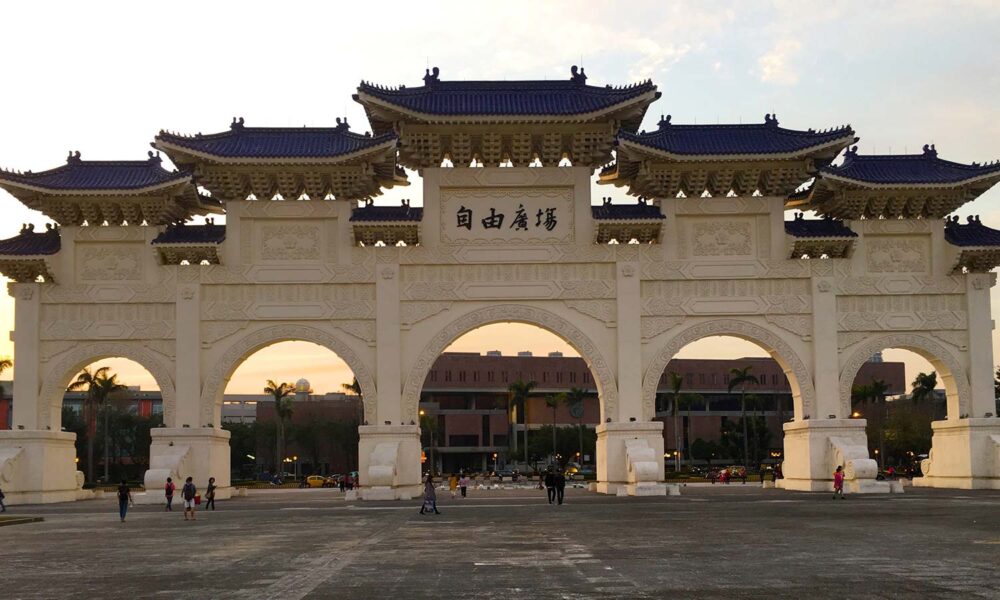A shared sense of history is a core component of human culture, but a lot of what our political leaders tell us about history is wrong. Sometimes terribly wrong. Correcting the record can be good for democracy. Taiwan is showing us how, and the United States could learn from its experience.
Canceling culture or nurturing it?
That’s especially true for President Trump, who used his July 4 rally at Mt. Rushmore to defend the controversial “tribute to our forefathers” from what he called a “left-wing cultural revolution.” He maligned decades of effort to develop a more inclusive and honest accounting of the US past as “a web of lies” spun by “Marxists” who “hate their own country.” Chase Iron Eyes, a lawyer for the Lakota people whose land was stolen to create Mt. Rushmore, lamented Trump’s indifference to the benefits of truth and reconciliation in the telling of US history.
Half a world away, both of Taiwan’s major political parties are doing what Trump and his disciples cannot: confronting an unpleasant past. The process is sometimes acrimonious and accusations of ulterior political motives abound. But there is a consensus on the need to uncover and atone for the sins of Taiwan’s forefathers, particularly Chiang Kai-shek: a ruthless dictator US politicians once heralded as the democratic leader of a “free China.”
The most obvious consequence is the elimination of Chiang’s name and image from the currency, the airport, official buildings and public parks. Statues are coming down. Trump would call it “cancel culture.” But it appears to be helping a lot of people better understand their own family histories and in the process is making Taiwanese society and culture stronger.
White terror
History has not been kind to Taiwan. When the Allied Powers transferred Taiwan from Japan to China at the end of World War II the island was more prosperous and technologically advanced than the Chinese mainland. Its people were better educated, communicable diseases were under control and individuals had modicum of control over their economic and social life.
All that ended when Chiang’s Republic of China took over in 1945. Property was confiscated. Stores of rice, sugar, medicine, gold, coal and other essential commodities were looted and sold to the mainland through black-marketeers. Carpetbaggers ran down the island’s essential industry and infrastructure. By 1947 the economy was in crisis. Food shortages and cholera were spreading.
The “Generalissimo,” as Chiang was known, used lethal military force to repress island-wide protests ignited by the police shooting of a Taiwanese street vendor in February 1947. Tens of thousands were killed or disappeared. It inaugurated more than four decades of political persecution, extrajudicial killings and ideological indoctrination known as the “White Terror.”
Chiang presided over the terror until his death in 1975. His son, Chiang Ching-kuo, oversaw its administration before succeeding his father. He continued to rule Taiwan under a declaration of martial law until July 1987, shortly before his death in January 1988.
How protest creates progress
US President Richard Nixon abandoned Chiang Kai-shek for his communist rival, Mao Zedong, not long after the General Assembly kicked Chiang’s government out of United Nations in 1971. The Generalissimo’s carefully cultivated image as the leader of a “free China” suffered irreparable damage. The aging autocrat and his heir apparent needed a new source of political legitimacy to ensure continued US aid. Chiang’s son, Chiang Ching-kuo, took steps to make Taiwan appear more democratic.
He began with token appointments of native Taiwanese and a modest relaxation of repression. Both steps raised expectations for genuine political reform. In 1979 those expectations erupted in a major public protest in the southern Taiwanese city of Kaohsiung. Chiang Ching-kuo quickly shut it down and jailed its leaders, but they would later form the core of a viable opposition. Some claim the Kaohsiung incident was the tipping point in Taiwan’s transition from authoritarianism to democracy.
That’s debatable. But the history is becoming clearer as the archives are declassified. There is little doubt the opposition gradually gained strength after the protest. Its Democratic Progressive Party (DPP) captured the presidency in 2000, ending fifty years of Nationalist (KMT) party rule. The DPP held on for another term before losing to a reinvigorated KMT in 2008 and 2012. Tsai Ing-wen led the DPP back to power in 2016 and won reelection in 2020. Taiwan’s multiparty democracy now seems firmly established.
Food for thought
The Taiwanese dissidents who fought for social justice and political change were once maligned by Chiang and his US patrons as “subversives” and “communists.” It was only because they challenged Chiang’s authority through public protests and exposed the injustice of those accusations though the free press that it became possible for the DPP to be accepted as a legitimate political party entitled to govern the island.
The change in perspective, both in Taiwan and in the United States, is now so complete that the Trump administration said it was willing to risk a nuclear war to protect Tsai’s DPP government from communist China. Yet at home, Donald Trump is behaving more like Chiang Kai-shek. At Mt. Rushmore he promised the ongoing US protests for social justice and political change, “will be stopped very quickly.” To that end, he’s piecing together his own secret police force, which is yanking protestors off the streets and hauling them away in unmarked vans.
It’s an odd juxtaposition in our shared history, but as Taiwan demonstrates how long and difficult it can be for democracy to emerge, the United States is showing how quickly and easily it can disappear.
About the featured image:
A memorial arch opens onto a massive plaza holding museums, parks, and other cultural icons. This was once dedicated to former president of Taiwan Chiang Kai-shek, but was renamed “Freedom Plaza” in 2007. G. Kulacki/UCS

